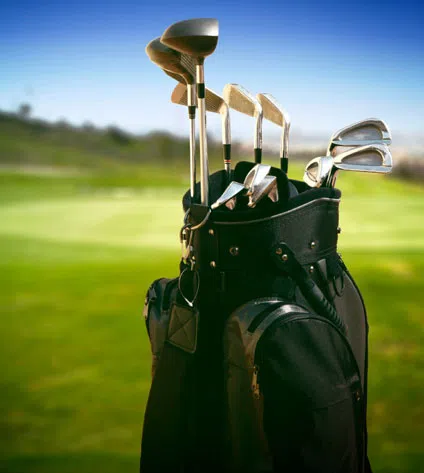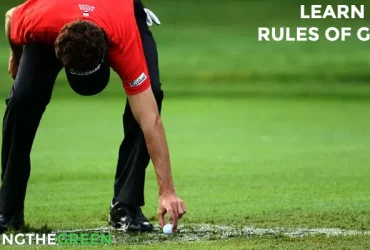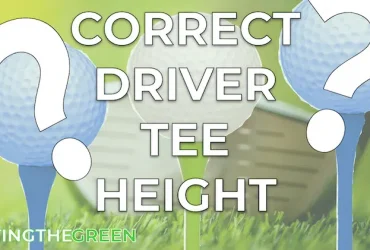Guide to Buying Golf Clubs
Contents
What you Need to Know Before you Buy your Golf Clubs!!
 A common misperception about buying golf clubs is that the more expensive the better. People believe that an eight hundred dollar club will cause them to play a great game. However, this really isn’t true. A thousand dollar driver or three thousand dollar iron set isn’t necessarily going to be better than a cheaper one.
A common misperception about buying golf clubs is that the more expensive the better. People believe that an eight hundred dollar club will cause them to play a great game. However, this really isn’t true. A thousand dollar driver or three thousand dollar iron set isn’t necessarily going to be better than a cheaper one.
Remember that big name manufacturers spend a lot of money to promote their stuff, and still make a profit. That means that this money gets added onto the price tag. A high priced club isn’t going to lower your handicap, but one chosen correctly will.
If you’ve ever wanted to know how or why the big name branded clubs carry such a hefty price tag you should visit PinemeadowGolf.com.
Or if you would like to learn a bit more more about the game of golf you can download the Ultimate Guide to Golf for Beginners on the right of this page. This is a mammoth guide on everything the beginner golfer needs to know.
Some points to take into consideration when buying clubs
Remember that the shaft is one of the most important parts of your club – a good shaft makes a good club. Shaft flex has a lot to do with how a club feels, and has a medium effect on its distance. That makes it an important factor in choosing the right club.
You’ll need to know how fast you swing, in mile or kilometers per hour. If you don’t know this information, go to a local golf shop and have it measured. Then, look at the following information.
What Type of Flex Shaft is Right for you?
- Ladies Flex – Driver speed swing of less than sixty miles per hour (a hundred kilometers per hour). Driver carry distance of fewer than a hundred and eighty yards. Club used from a hundred and fifty yards: a three iron or a wood.
- Senior or A Flex – Driver speed swing of sixty-five to seventy-five miles per hour, or a hundred to a hundred and twenty kilometers per hour. Driver carry distance of between a hundred and eighty and two hundred ten yards. Club used from a hundred fifty yards: a four iron.
- Regular Flex – Driver speed swing between seventy-five and eighty-four miles per hour, or a hundred and twenty to a hundred and thirty-five kilometers per hour. Driver carry distance is between two hundred ten and two hundred forty yards. Club used from a hundred and fifty yards: a five iron or six iron.
- Stiff Flex – Driver speed swing is between eighty-four and ninety-three miles per hour, or a hundred thirty to a hundred fifty kilometers per hour. Driver carry distance of two hundred forty to two hundred sixty yards. Club used from a hundred fifty yards: a six iron or seven iron.
- Extra Stiff or X-Stiff Flex – Driver speed swing over ninety-three miles per hour (a hundred and fifty kilometers per hour). Driver carry distance of more than two hundred sixty yards. Club used from a hundred fifty yards: an eight or nine iron.
Random Tips on Getting the Right Clubs for you
- If you’re looking for a club that may improve your game, think about purchasing a shallow face metalwood. These clubs are easy to hit with and very accurate, because they have a low center of gravity. This is something that any golfer can appreciate, and these clubs are quite economical.
- Beginners and novices who are putting together a set make-up may wish to consider eliminating some clubs from their sets. The two, three, and four irons are hard to hit clubs which should be replaced with number three and number five hybrid clubs instead, for an easier game. Once you’ve mastered these clubs, you can consider adding the others back into your set.
- Every golfer should use clubs of a standard length unless he or she is particularly short or tall. A standard length club lets you hit the ball on center most of the time, which means better accuracy and distance. Recently, standard player driving lengths have increased from around forty-three inches to forty-four or forty-six inches. This is good news in a way, since an increase in length means an increase in distance. A longer club creates more speed at the head, giving you more distance. However, distance isn’t the only thing you should worry about. It’s also important to be accurate.
- Unfortunately, the longer club is also harder to control and less accurate. Most of the time, it’s not worth the sacrifice in accuracy for the extra distance with clubs more than about forty-four inches. Most people should keep driver lengths to this size. Women’s average lengths are usually an inch shorter than those for men – something to keep in mind when buying clubs.
Choosing A Club If You’re Tall or Short
If you’re not a standard height, the way to determine the right length for your clubs is simple and easy. Just get someone else to help you take a wrist to floor measurement. Wearing street shoes, stand up straight, with your feet around a foot apart.
Make sure your arms are relaxed at your side, but don’t slouch. Right handed players should have their helper measure from the left wrist to the floor. Left handed players will do the same, but from the right wrist. Most shorter than average players measure in the low thirties. Average players tend to measure in the mid-thirties, and taller players measure thirty-five inches or more.
Shaft Composition – Graphite or Steel?
The question of whether to use a steel or graphite shaft also comes up regularly. Generally, men between their teens and mid-50s use a steel shafted iron and graphite shafted woods, with older men using graphite shafts on all clubs. As we age, our swing speed slows, and lighter weight shafts may help us recover some of our lost speed.
That helps us regain lost distance. Older people should also switch to a softer flex shaft. Ladies generally use graphite shafts for all clubs, because the lighter weight improves the speed of their swing. However, some women may wish to use steel irons, depending on their upper body strength.
Does Loft Angle Matter?
Another factor that’s important is loft angle. It has a major effect on distance, off the tee. That means it’s important to pick the right loft for your specific driving club. If you have a slow swing speed, choose a higher loft. A higher loft will give you a higher trajectory, better launch angle, and more carry, resulting in greater distance. Many long time players have always believed that distance comes with less loft. However, this is only true if you have a fast swing.
Ladies and senior flex players will want to look for a thirteen to fifteen degree loft. Regular flex players should choose a loft of twelve degrees, and stiff and extra stiff flex players will prefer ten to eleven. People with extremely fast swing speeds should use a loft of less than ten degrees.
Club Choice and Slice Correction
The single biggest problem most golfers have to deal with is slicing the ball off the tee. If you’re prone to this, you’ll need a closed face driver for correction. That’s because the face angle of the club can have a big effect on accuracy off the tee. Drivers come with close, square, and open face angles, and it’s important to pick the right one. Expect that you’ll get a five to seven yard slice correction for every degree the face is closed, provided your current driver has a square face.
Factors That Add Up To Distance
If you’re worried about distance, remember that there are four components to how far you can hit a golf ball. One is the composition of the ball – some balls just fly farther. A 100 compression ball will go farther than a 70 compression ball, in pretty much every circumstance. Club loft is another factor – as discussed above, more loft is more distance for slow swingers, and less loft contributes to more distance for faster swingers. Club length is another important point.
A longer club generates more distance, up to a certain point. Swing speed is last, but most important. The faster the head of the club goes, the further the ball will go. Many people think that metals have a big effect on distance, but this is actually just a myth. If metal have any effect, it is small.
Want some advice on what golf clubs to buy? See my article on buying beginner golf clubs.




